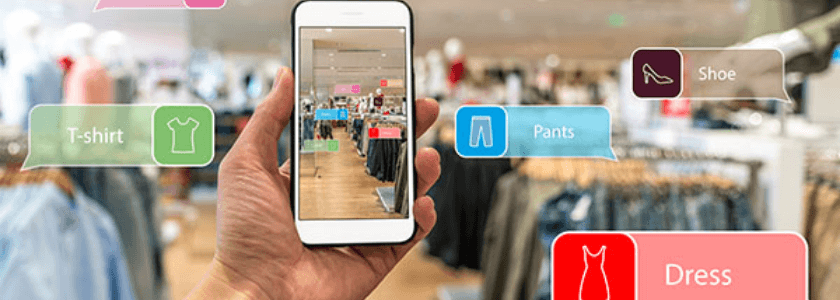How to Transform your Business Using AI with AR and VR Technologies?
In recent years, technology has advanced at a breakneck pace. Some technologies have come and go but a few are still growing.
Along with artificial intelligence (AI) and machine learning, many people are talking about virtual reality (VR) and augmented reality (AR) as the next big things that will change the way we live and do business throughout the world.
And keeping up with the rapid changes sweeping across sectors and our daily lives is one of the only ways to stay relevant today. AR and VR technologies have had a substantial impact on a variety of businesses, including entertainment (I don't need to remind you of Marvel Movies featuring AR/VR technologies, right?)
Since its beginnings, augmented/ virtual reality has become increasingly integrated into businesses and people's daily lives. These technologies have piqued the curiosity of not only smartphone users but also new and existing businesses. It is driving entrepreneurs and marketers to investigate AI in AR/VR applications development.
The advancement of AR and VR technologies in the next years will drive every entrepreneur to resort to professionals. Businesses will enter this industry to reap a great share of the predicted profit.
The Combination of AI with VR Technologies
The combination of virtual reality (VR) and artificial intelligence (AI) in the industry may be easily missed. Virtual reality is an emerging technology that modern organizations are keeping an eye on, although it has a low level of interest. Many businesses, on the other hand, see AI as critical to their success. The links between AI and VR, however, are more complex than they look. The fusion of AI and VR technologies are more widespread than it appears.
For Instance, How many times you've seen people posing in front of their smartphones and experimenting with different Snapchat, Instagram, and Facebook filters? (if you say no, here comes the eye-roll)

Although this is a very basic and innocent application of technology, it serves as an excellent example of how AI technology with AR and VR technologies have permeated and become seamlessly incorporated into every aspect of our lives (even if it takes the form of doggie ears or Lamb's faces).
Although the benefit of AI technology in VR is not limited to this. Because of the following factors, combining VR and AI is only now becoming feasible:
- Recent advances in AI, particularly deep learning, have made it possible to recognize images and sounds in real-time.
- Local processing and storage are more available and less expensive.
- Increasing network capacity to allow for more diverse data streams
- AI in the cloud is now available.
With the use of AI with AR and VR technologies, the finished product of any brand can be highlighted in marketing, as well as introducing and manifesting a whole new manner of storytelling and user engagement.
Combination Of AI technology with AR
One of the emerging trends and the future scope of AR and VR is the use of technology for indoor navigation. Augmented reality-powered navigation devices will direct people inside in the same manner as GPS-enabled software and maps guide us to a store, hospital, or other location from the outside.
They'll explain to people how to use any product, software, or location enjoyably and straightforwardly, giving them the finest possible experience without relying on others.
Additional AR components could make it easier for users to find products that can be improved with promotions like virtual coupons.

Remember, there was this craze of Pokemon-GO?
It has AI with AR technology in it.
Retail marketers are likely to focus on combining an AR interface akin to Pokémon Go with a service like IBM Watson's "Macy's On-Call" in-store virtual assistant.
By allowing deep neural networks to replace standard computer vision algorithms and add new features like object detection, text analysis, and scene labeling, AI improves the AR experience.
AI with AR and VR Technologies are transforming these Industries
AR and VR technologies coupled with AI can open up enormous possibilities on a larger scale in multiple industries such as-
1. Healthcare
AR and VR technologies are altering the healthcare industry by accomplishing a range of goals. Medical care evolves daily to ensure that physicians and professionals can provide the best possible care to their patients.
- In robotic devices, AR/VR technology is used to execute high-precision surgeries under the supervision of a human surgeon.
- Even emergency treatment employs augmented reality maps superimposed over real-life people to assist patients in locating medical hospitals, pharmacies, and other healthcare institutions.
- Doctors can quickly approach patients with individualized therapy using VR and AR tech.
- A machine learning-powered microscope is an excellent example of how AI and VR might impact science, particularly medicine.
2. Automobile industry
Volvo's initiative to create a mixed reality representation of the showroom experience. The automaker used virtual reality to mimic the feeling of viewing a new car in a showroom, and also developed an app that allows users to test drive cars in 3-D video models from the comfort of their own homes.
In the automobile industry, cars are also well equipped with technologies/apps inside them to navigate around easily.
3. Entertainment and Gaming
VR experiences have even been used in the film business, most notably in the popular TV show Game of Thrones or our favorite Marvel movies. Or in gaming, there is Pubg or Pokemon Go.

While Virtual Reality has gained a lot of traction as a result of its extremely immersive qualities, AR tech is proving to be a game-changer and a lucrative immersive technology that will assist the Gaming and Entertainment industry in the long term.
AR/VR escape rooms are another exciting business option.
4. E-commerce
Customer satisfaction, brand recognition, and the effectiveness of the sales process with technology gradually infiltrating the e-commerce market. Retailers are looking for new and innovative ways to improve these areas and stay ahead of the competition.
Chatbots, remote assistance, and collaboration will be made easier. Thanks to AR/VR technologies, technicians will be able to monitor on-site concerns in real-time on their mobile phones or laptops.
Retailers can customize their online store to their liking and make changes as needed to keep up with changing customer trends and product preferences. Like the use of ShoppAR. These characteristics elevate the shopping experience beyond basic realism; they create a heightened sense of reality and an immersive encounter.

5. Advertisement & Media
AR and VR technologies has been successfully employed in public relations and marketing campaigns for films, television shows, and other forms of media. Printed graphic or real-life object recognition, in which the software recognizes a unique symbol through a webcam or mobile phone camera, has been the most common.
A virtual experience catches the user's complete attention, allowing advertisers to focus their message on the best possible audience. VR will be the next core computing platform, similar to PCs and smartphones, and a fight for marketers and businesses.
6. Education
Advanced AR and VR technologies will aid educators in creating engaging learning content and making the learning experience enjoyable. This will make it more likely for distance learners to participate in VR classrooms, ensuring that they do not miss out on the benefits of learning in a traditional classroom setting.
7. Travel and Tourism
Tourism includes a variety of forms of transportation, hotel reservations, hospitality, tours and sightseeing, local experiences like cuisine or festivals, souvenirs, and so on. As a result, the market for augmented reality business prospects is booming.
Google Maps has been updated to include augmented reality. Navigation is the most obvious use case, and directions appear on the screen as users scan the streets with their smartphone's camera.
AR and VR technology also helps in slow-moving industries like real estate, or mast- moving like Fashion industries. Or the Robots working in Restaurants. All are the results of AR/VR technologies coupled with AI.
|Read: 10 Best Real Estate Technology Trends to Look for in 2022|
Now let's take a look at how AR and VR technologies with web application development companies can help you tap into these areas more efficiently and expose your business to a new audience.
How AR and VR Technologies Helps
Multisensory Interaction
Sight, hearing, touch, smell, and taste are the five senses that allow us to interact with the world. Both AR and VR technologies engage customers' senses more thoroughly by immersing them in enhanced settings via digitally transformed venues that include visual, aural, and tactile elements.
Experiential Learning
Including our mental faculties in everyday actions and decisions improves the overall outcome and experience. Consumers can get a lot of intellectual experience from VR and AR-enhanced systems. Platforms that provide computer and mobile device users with a profusion of sources from which to browse, glean, and review information on people, places, and things have seen waves of commercial success.
Emotional Connection
Most marketing departments place a high focus on connecting customers' emotions to a brand. By more thoroughly engaging the entire person, tactics built around AR and VR technologies deepen and reinforce those ties. As a result, customers will have a better and more enjoyable experience, which will lead to beneficial and far-reaching outcomes.
Final Words
Augmented and virtual reality technology will usher in a commercial revolution in the next years. You should align your company with technology if you want to stand the test of time.
The use of AR/VR technologies is expected to increase as more retail, real estate, automotive, and media industries try to engage their core consumers with the technology. To incorporate these technologies into your business process, feel free to contact us. Our software development company team are more than happy to help.


